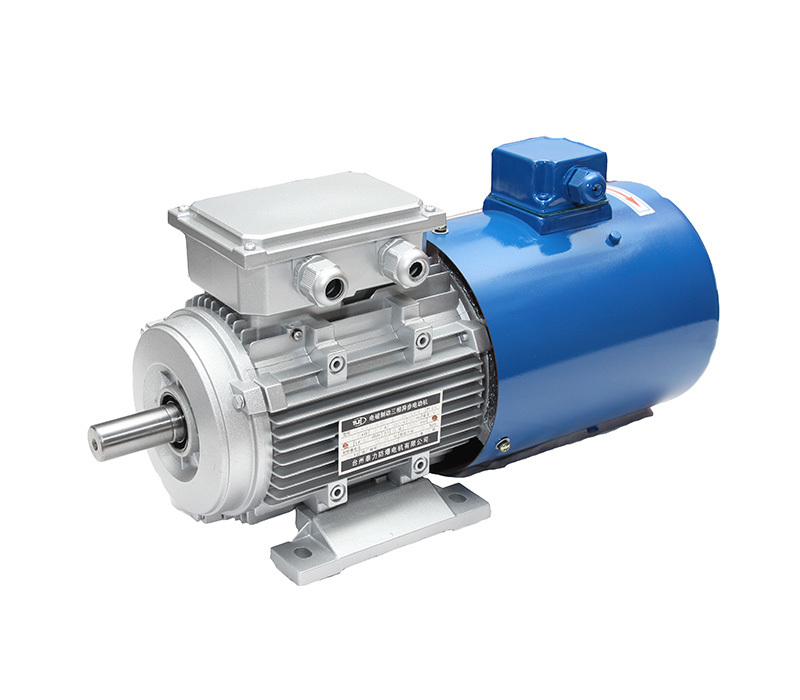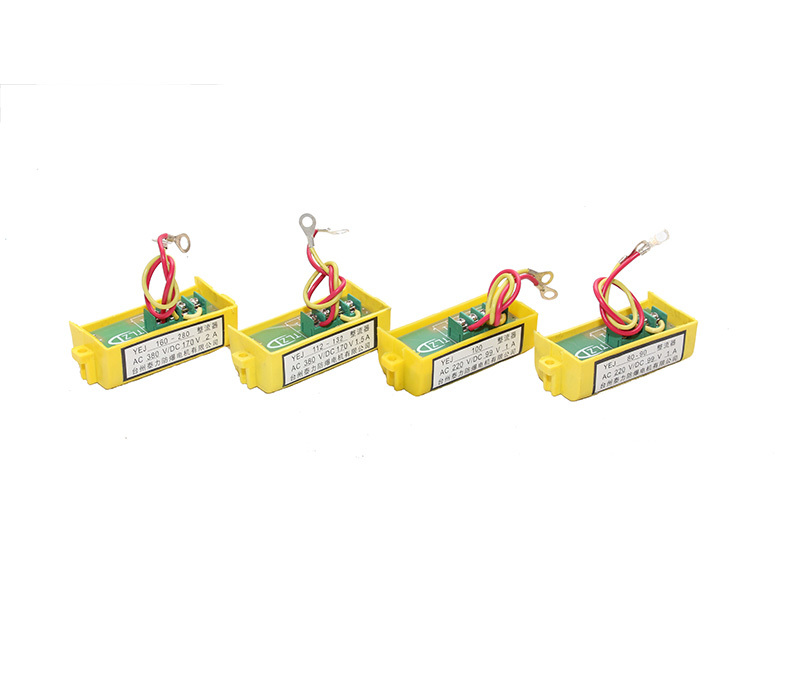YPEJA series frequency conversion speed regulation electromagnetic braking three-phase asynchronous motor
The AC brake has a fast starting response, short braking time, and adjustable reliable braking torque
Product serial number:
Category:
Keyword: YPEJA series frequency conversion speed regulation electromagnetic braking three-phase asynchronous motor
- Product Description
- Technical parameters
- Appearance and installation dimensions
- Wiring method
- Gap and torque adjustment
- Common faults and troubleshooting
- Sample and video download
-
- Commodity name: YPEJA series frequency conversion speed regulation electromagnetic braking three-phase asynchronous motor
Product Introduction
The YPEJA series frequency conversion speed regulating electromagnetic braking three-phase asynchronous motor is a combination of YP series frequency conversion speed regulating three-phase asynchronous motor, AZML series AC electromagnetic brake, and cooling fan. It is a motor suitable for frequency conversion speed regulation.
Application Scenarios
This series of motors is suitable for industries that require mechanical transmission, such as light industry, textiles, and electroplating production lines, to achieve speed regulation, accurate positioning, and reciprocating operation.
Working Principle
When energized, the electromagnet generates a strong electromagnetic force to attract the armature plate, compressing the brake spring. The pressure between the two mating surfaces of the friction disc and the armature plate and the motor rear cover is released, allowing the motor to rotate freely. When de-energized, the brake spring pressure presses the armature plate, tightly pressing the friction disc, generating a strong frictional braking torque, and bringing the rotating motor to a quick stop for accurate positioning.
Product Features
1. The motor protection level is IP44, and the brake is IP23;
2. Motor cooling method IC416;
3. Insulation class F;
4. The brake uses AC power supply, eliminating the need for AC/DC conversion, improving reliability;
5. The motor's mounting dimensions and power ratings fully comply with JB/T6456 industry standards and IEC-72 international standards;
6. The outer casing of the 71 motor is made of aluminum alloy, while the outer casing of the 80~160 motor is made of aluminum alloy or cast iron.
Operating Conditions
1. Rated voltage: Standard product is AC380V 50Hz;
2. Operating mode: S1 (continuous operation);
3. Altitude not exceeding 1000m;
4. Ambient temperature: -15℃~40℃;
5. When the average minimum monthly temperature is not higher than 25℃, the average maximum relative humidity in the wettest month is 95%;
6. Speed regulation range: 5Hz~50Hz is constant torque speed regulation, 50Hz~100Hz is constant speed speed regulation.
-
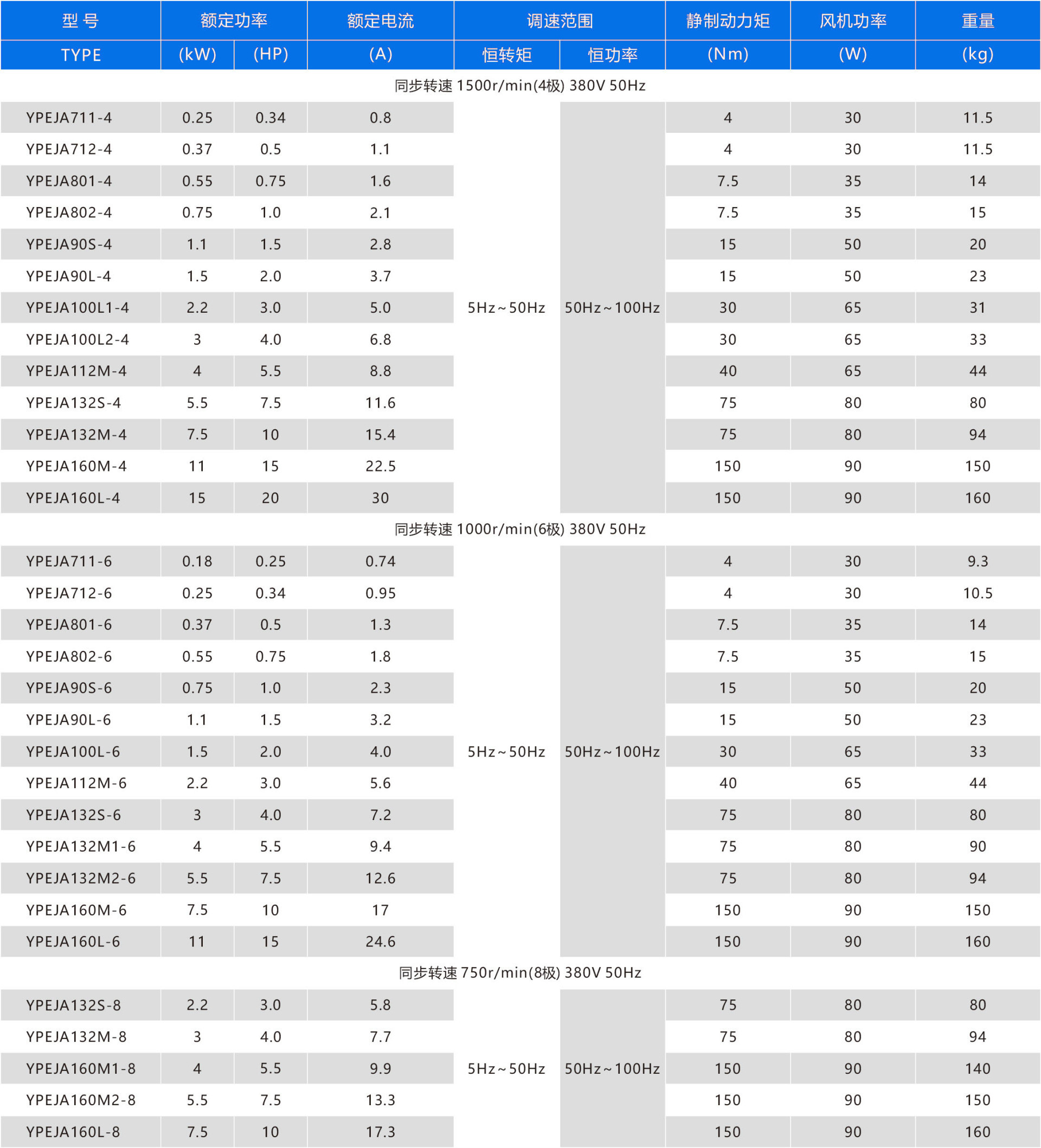
-

Electric motor with B3 type mounting base and feet, and end cap without flange


Electric motor with B5 type mounting base without feet, and end cap with flange (with through hole) R is the distance from the flange mating surface to the shaft shoulder
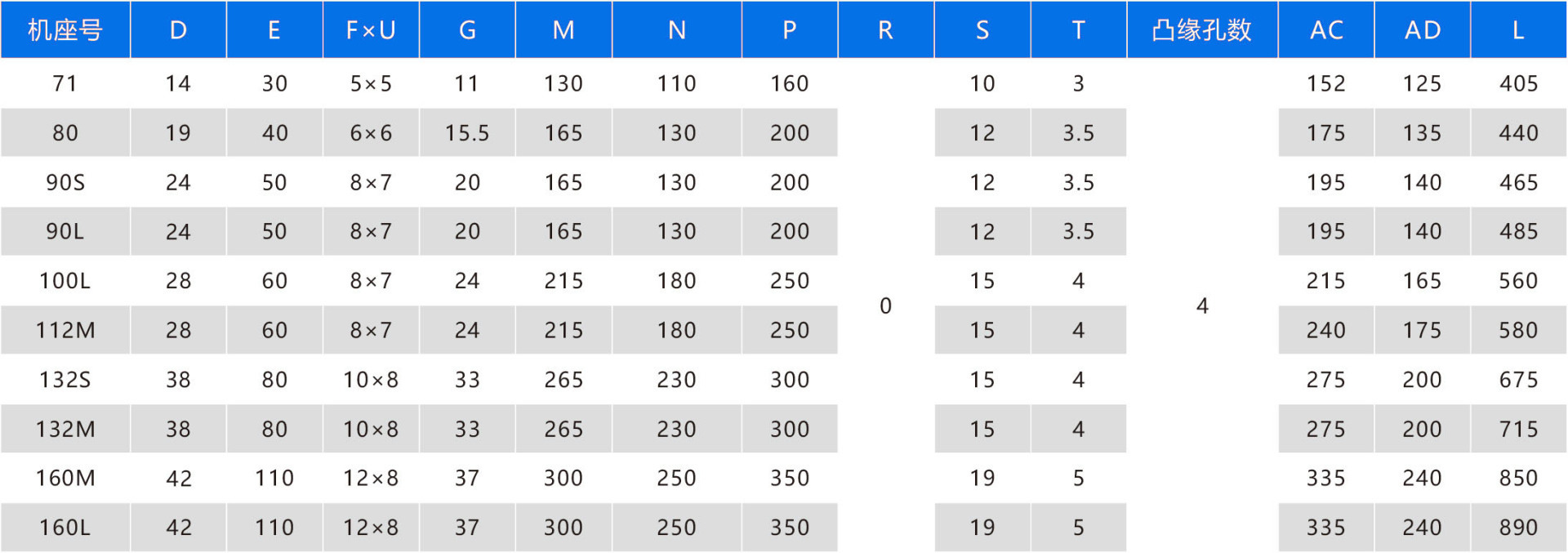

Electric motor with B14 type mounting base without feet, and end cap with flange (small flange with screw holes) R is the distance from the flange mating surface to the shaft shoulder

-
1. The connection method for the motor and brake is the same, using a Y-connection method;
2. The quick brake connection method is as follows: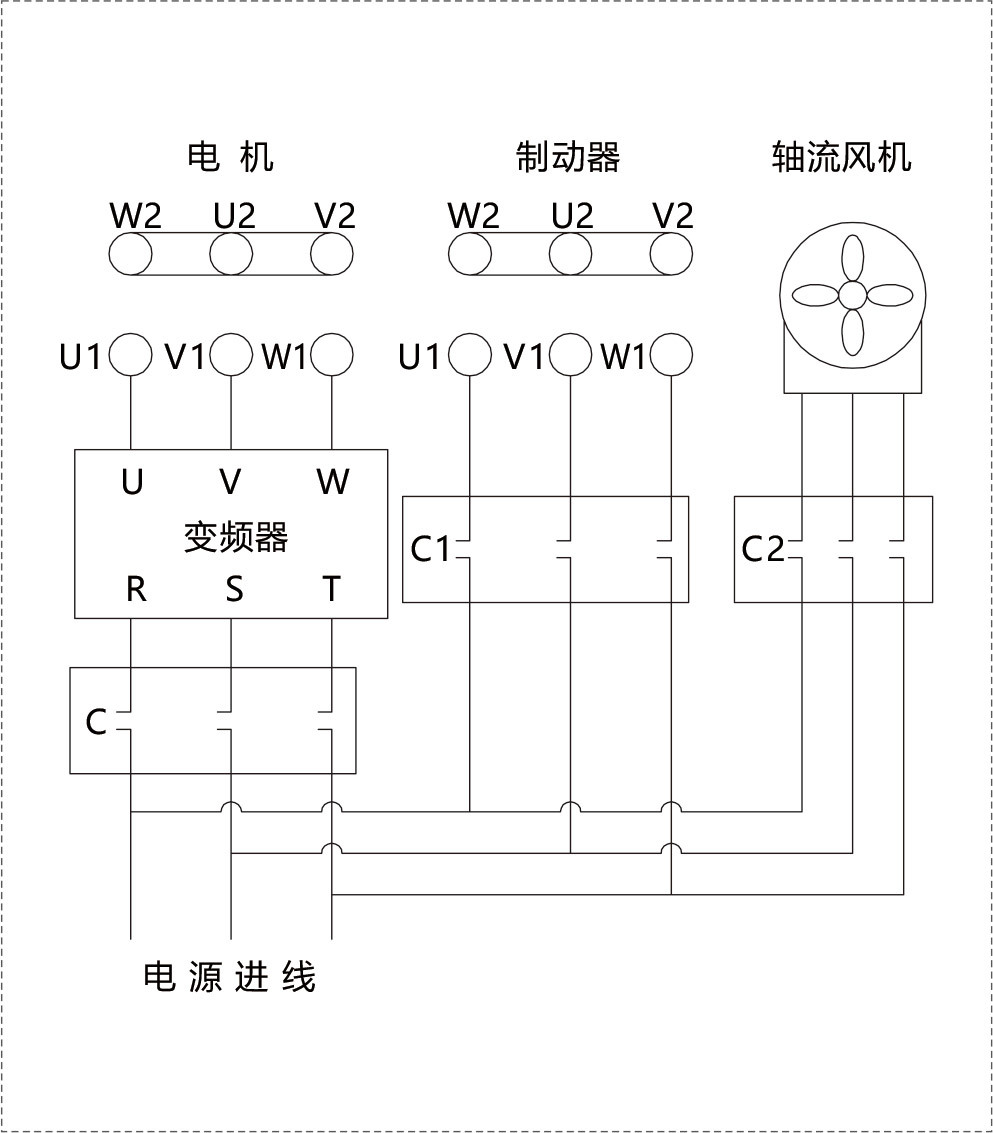
-
1. Air gap value (δ) of the brake fitted in motors of each specification in this series

2. Air gap inspection
As shown in Figure 1, the moving distance between the armature 2 and the electromagnet 6 is called the air gap (δ). The normal operating air gap (δ) does not exceed the specified air gap value. The motors are adjusted to the initial operating air gap range at the factory. After running for a period of time, the air gap value increases due to friction pad wear, which will affect the normal engagement and braking effect of the brake. Therefore, after the motor has been used for a period of time, select the feeler gauge size according to the maximum air gap value to check the size of the air gap (δ). During the inspection, the feeler gauge of the selected size can be directly inserted into the air gap (δ). If it can be inserted, it indicates that the air gap (δ) is too large and needs to be adjusted.
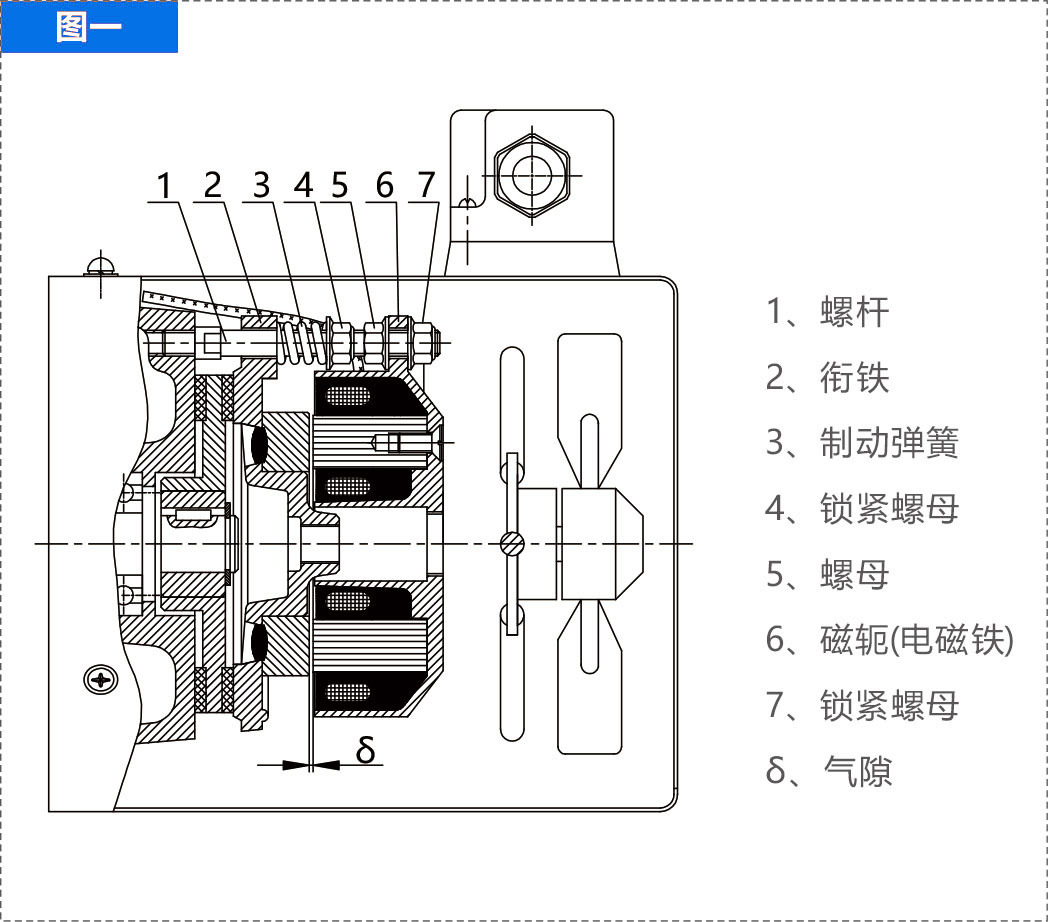
3. Air gap adjustment
As shown in Figure 1, prepare a set of feeler gauges of different thicknesses. Select the thickness according to the initial operating air gap value in the table above. Loosen the nut 5, place the feeler gauge into the air gap (δ) at the edge of the loosened screw, slowly tighten the lock nut 7, press the feeler gauge, and then tighten the nut 5 outwards, and remove the feeler gauge. Use the same method to adjust the air gap at the second and third screws. After adjustment, tighten the nut 5 and the lock nut 7 again, and check regularly whether the nuts are loose. The brake screws of YEJA132 and above motors have 6 sets. The above method can be used to adjust three sets first at 120° intervals, and then adjust the other three sets. If there is no regular feeler gauge, similar thickness iron sheets can be used instead. Each 60° rotation of nut 6 (six equal divisions of the hexagonal nut) advances approximately 0.15 mm. The three air gap adjustment points must be uniform, otherwise it will affect the engagement and braking of the brake, and in severe cases, it will burn out the coil.
4. Torque adjustment
When the air gap is normal and the braking torque does not reach the rated braking torque, the three safety nuts 4 (six for models above 132) can be uniformly tightened forward to compress the braking spring 3, which can increase the braking torque, but not too much. It is only necessary to reach the rated braking torque on the nameplate. Too much spring pressure will cause difficulty in engagement, or an unpleasant squeaking electromagnetic sound, and in severe cases, it will burn out the coil.
-
Serial Number Malfunction Phenomenon Inspection Location and Method Troubleshooting Measures 1 Brake does not engage,
Severe vibration
and a squealing sound(1) As shown in Figure 1, check if nut 5 is loose;
(2) Measure whether the air gap (δ) exceeds the operating air gap value;
(3) Use a multimeter to measure the resistance of the three-phase windings to see if they are basically equal and whether there is any disconnection;
(4) Use a multimeter AC voltage 500V range to check if there is any missing phase in the three-phase AC power supply;
(5) Braking torque exceeds the rated value by too much;
(6) Check if there are foreign objects stuck on the suction surface or if there is dry oil scale accumulated on it, causing the surface to be uneven;
(7) The suction surface becomes uneven after long-term use;(1) Tighten nut 5;
(2) If the air gap (δ) is too large, adjust it to the initial operating air gap range;
(3) Repair or replace the yoke if there is a disconnection;
(4) Identify and resolve the issue;
(5) Adjust the braking spring compression length to control the braking torque;
(6) Remove foreign objects and oil scale;
(7) Use a lathe or surface grinder to smooth the surface;
(8) After disassembling, remove rust spots, and reassemble for normal operation.2 Brakes are ineffective and unreliable (1) Friction pad wear, increased operating air gap, and decreased torque;
(2) Friction pad damage;
(3) Load inertia is too large, exceeding the braking torque;(1) Re-adjust the air gap (δ);
(2) Replace the friction disc with a new one;
(3) Re-select the motor model.3 Motor overheating (1) Overload, exceeding the rated current;
(2) Whether the axial flow fan is working properly;
(3) Whether there are cotton, yarn, paper scraps, etc., blocking the cooling air source at the motor air inlet;
(4) Check if there is any missing phase in the power supply and motor.(1) Reduce the load and control it within the rated load, or reconsider the motor selection;
(2) If it cannot work, replace the fan;
(3) Clean the cotton and other debris from the motor air inlet and fan blades;
(4) Repair. -
File Name Size Upload Date Details YPEJA Series Variable Frequency Speed Electromagnetic Braking Three-Phase Asynchronous Motor 807KB 2021/3/10 Click to Download Operation Video 100M 2021/3/10 Click to Download
Related Products
Message
If you have any questions, please contact us!

